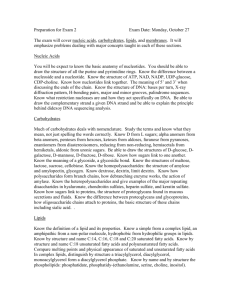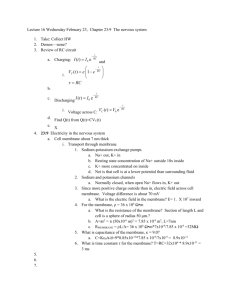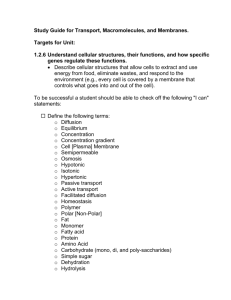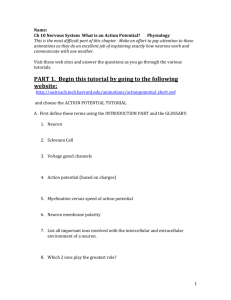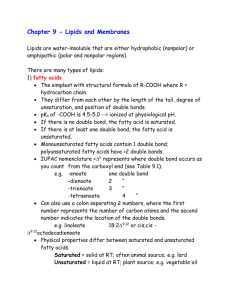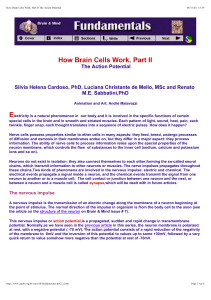Membrane/Lipid Introduction
advertisement
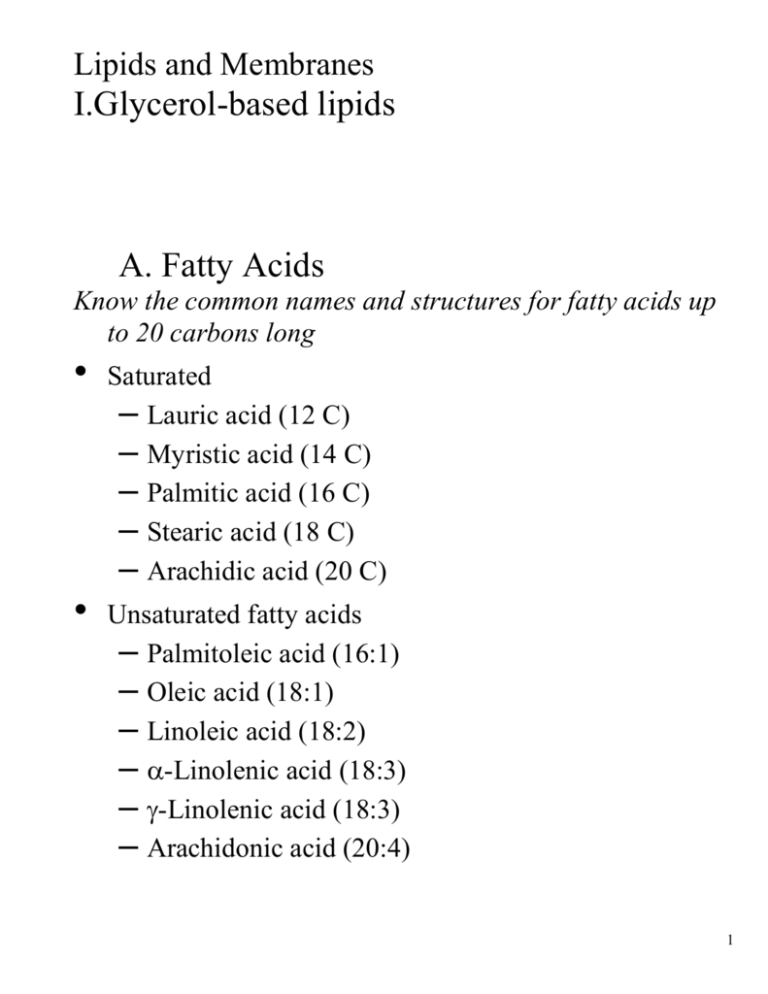
Lipids and Membranes I.Glycerol-based lipids A. Fatty Acids Know the common names and structures for fatty acids up to 20 carbons long • • Saturated – Lauric acid (12 C) – Myristic acid (14 C) – Palmitic acid (16 C) – Stearic acid (18 C) – Arachidic acid (20 C) Unsaturated fatty acids – Palmitoleic acid (16:1) – Oleic acid (18:1) – Linoleic acid (18:2) – -Linolenic acid (18:3) – -Linolenic acid (18:3) – Arachidonic acid (20:4) 1 2 Saturation versus unsaturation 3 B. Triacylglycerols 4 C. Phosphoacylglycerols ROOT STRUCTURE: phosphatidylglycerol Phosphatidylcholine 5 Other glycerolipids and their charges: 6 II. Sphingolipids • • • Sphingosine is an 18-carbon amino alcohol Ceramides are amide linkages of fatty acids to the nitrogen of sphingosine Glycosphingolipids are ceramides with one or more sugars in beta-glycosidic linkage at the 1-hydroxyl group 7 III. Glycolipids • • Glycosphingolipids with one sugar are cerebrosides Gangliosides - ceramides with 3 or more sugars, one of which is a sialic acid • 8 IV. Isoprenoids: Steroids • • • Based on a core structure consisting of three 6-membered rings and one 5-membered ring, all fused together Cholesterol is the most common steroid in animals and precursor for all other steroids in animals Steroid hormones serve many functions in animals - including salt balance, metabolic function and sexual function • 9 Membranes 10 12.6 Membrane properties/models: Davson-Danielli Butter sandwich Benson-Green Singer-Nicolson Fluid Mosaic Model 11 Membrane Fluidity/Phase Transitions Tm 12 Membrane Transport and Channels 13.1-Transport of Uncharged Species 13 13.1-Transport of Charged Species 14 The Nernst Potential 15 The membrane is a capacitor: V=q/c q=charge (in Coulombs, 1e-=1.6 x 10-19 C/electron charge) V=voltage in Volts c=capacitance (F,Farads) Q: How many H+’s need to be pumped by an ATP’ase across a spherical bacterium (r=1.0 µm) to get a transmembrane voltage of –60. mV? Bilayer capacitance = 1.0 x 10-6 F/cm2. Area of a sphere=4r2 Volume of a sphere=4/3r3 H+ H+ 16 Example: Calculations on a neuron .For the Torpedo ray neuron below : a. Give the expected equilibrium membrane potential which would be achieved by opening ion channels specific for K+, Na+, or Ca++ and Cl- one at a time and allowing the system to come to equilibrium. Temperature = 37o C. b. A typical neuron can be approximated as a cylinder with a volume of 6300 m3 and a surface area of 2700 m2. How many Na+ ions are required to charge the above neuron membrane from 0.0 mV to the equilibrium Na+ voltage (see above)? assume 1.0 µF/cm2 capacitance. c. Will the internal [Na+] change significantly in response to this flux of sodium ions ? Calculate the final [Na+]in. Cl- =100. mM Ca2+ = 2.0 µM mM Na+ =20. mM K+ =200. mM Cl- =5.0 mM Ca2+ = 2000 µM mM Na+ =200. mM K+ =7.0 mM 17 Ion Channels: Permeability and Patch Clamping 18 The Structure of Ion channels-Potassium Channel ( see http://blanco.biomol.uci.edu/Membrane_Proteins_xtal.html for all membrane protein structures) See Powerpoint Presentation IonChannel.pdf 19
